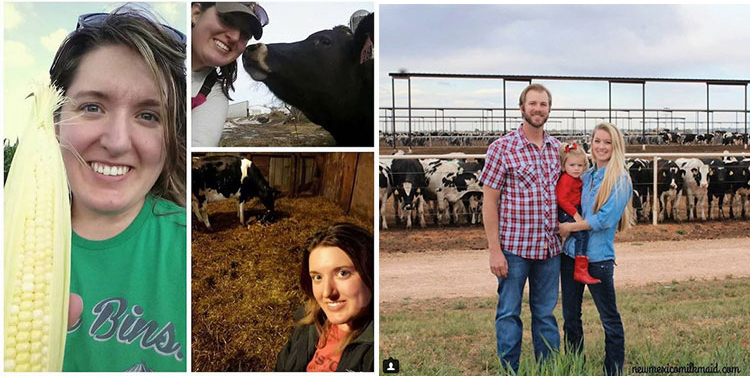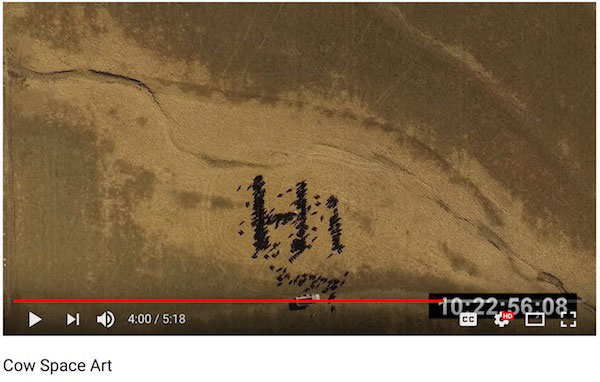
“Where are our consumers spending time on social media?”
I get this question a lot from farmers and dairy industry communication professionals during my training sessions. They are wondering where they should spend their time and resources, including paid promotion, to reach our consumer audience.
I believe you should connect with people that you can relate to and empathize with versus the philosophy, “Here's a specific target audience you have to reach.”
Let's take me, for example. Am I the best person to engage a young millennial mom who's dealing with two children, a professional career, and an overly connected life? Most likely not.
But, I can pass along our Undeniably Dairy resources targeted at those moms to female dairy farmers and registered dietitians for them to share. I am still helping to spread the message, even if I'm not the person they are directly connected to.
Now, depending on who you think you can reach and connect with, I believe you should know where that audience is spending the most time on social media.
Let's break it down by channel:

Facebook and Instagram
With 2.3 billion monthly users, Facebook is the world’s most active social network. I believe this is where you have a chance to reach the most people, primarily in the 30 to 55-year-old group. From what I've seen on the many Facebook pages that I help maintain and audit, as well as what experts say, video is the primary driver of engagement and reach.
The content to be shared should be funny, useful, educational, and relevant. Unless you are getting a lot of interaction with your audience, you will need to put paid promotion behind your posts to get them seen. Check out these examples of farmers doing a great job on Facebook.
Dairy Carrie
Tillamook Dairy Farmer
Modern-Day Farm Chick
With more than 1 billion monthly active users, Instagram is one of the fastest growing social networks and where you will probably reach a younger demographic than Facebook. I would recommend checking out Instagram Stories (much like Snapchat) and IGTV (much like YouTube).
The content should be beautiful, inspiring, and entertaining as well as useful. Vertical video and photos perform very well in this network. Don't forget to use relevant hashtags to help get your content in front of your audience. Check out these examples of farmers communicating successfully on Instagram.
New Mexico Milkmaid
See Jess Farm
khump22

YouTube
YouTube is the second-largest search engine and third-most visited website after Google and Facebook with more than 400 hours of video uploaded every minute. This is where you'll find many younger audiences looking to be entertained or trying to figure out how to do something.
If you create a video, make sure you consider uploading it to YouTube using keyword search terms (such as dairy farming, dairy cows, barns, fields, or Holstein). Check out these examples of farmers doing a great job on YouTube.
Peterson Farm Bros.
Farmer Derek

Twitter, LinkedIn, and Pinterest
Twitter claims it has 336 million monthly active users, but it has had issues with fake accounts. Because of the overwhelming support of the current administration and reporters using it to break news, Twitter remains relevant. Several farmers I know have built strong followings and engagement with consumers, especially thought leaders. Twitter is also great for events and banter. Check out these examples of farmers who are active on Twitter.
Jenni Tilton-Flood
Farmer Nate
Will Gilmer
With more than 500 million registered members (mostly professionals), LinkedIn is a business-friendly network where thought leaders get news and interact with other professionals. You can share, “like,” and post comments like on other social networks.
With 200 million-plus active users, Pinterest is a smaller network. However, 70 million users are U.S.-based women wanting to discover new recipes and crafts as well as find ideas for their homes and events. If you post many pictures or do recipes on your website, then you should have a Pinterest page to share these items. Check out these examples of farmers doing a nice job on Pinterest.
Farmer’s Wifee
Karen Bohnert
There are other platforms, such as Snapchat (which has affordable advertising) and messenger platforms like Facebook and WhatsApp, which are always changing and trending.
If you are looking to reach consumers through social media, I suggest getting in contact with your local checkoff or co-op organization for help or communications training. If you are unsure of what to do or where to go, feel free to reach out to me (don.schindler@dairy.org) or join the Dairy Hub where we have lots of online training classes for you.

The author is a Senior Vice President of Digital Initiatives at Dairy Management Inc.








